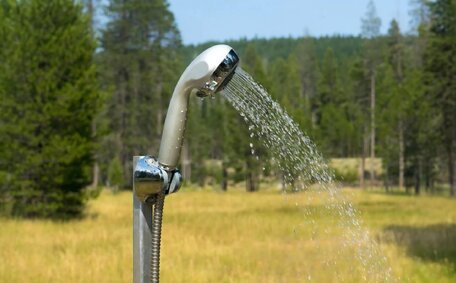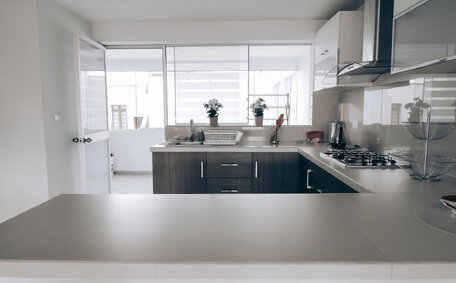Why Your Hot Water System Might Fail
Several typical issues may cause your hot water system to cease delivering hot water. A gas water heater may fail to heat water if the pilot light extinguishes or the gas supply is disrupted. The pilot light may blow out from a draught or simply fail over time. Obstructions in the gas line or issues with the gas control valve can also cut off the gas supply.
For electric water heaters, first check the power supply, then investigate other issues such as a tripped circuit breaker or a power outage if the hot water is lost. Deterioration of the anode rod over many years of use can also lead to tank corrosion and failure of both electric and gas hot water heater models.
Electric water heaters rely on heating elements to warm the water in the tank.
A loss of hot water can stem from sediment build-up in the tank, malfunctioning thermostats or sensors, plumbing leaks, high water usage, or faulty inlet and outlet valves.
Regularly draining your water heater and replacing the anode rod can help you avoid sudden occurrences of cold water.
Checking the thermostat and heating elements
Follow these steps to inspect the thermostat and heating elements of your electric water heater:
- First turn off power to the water heater at the circuit breaker or unplug it before conducting any inspection.
- After removing the access panel, inspect the thermostat for secure connections and ensure the dial reflects accurate temperature settings.
- Check both upper and lower heating elements for any corrosion or mineral deposits. Elements should be fully submerged without exposed wiring.
- If the lower element is bad, drain tank thoroughly first before proceeding with replacement. Make sure power is off when removing elements.
- Replace any blown fuses or bad breakers for the water heater circuit.
- Restore power and verify that the thermostat activates and deactivates the heating elements in response to temperature changes.
Diagnosing and resolving many hot water problems can be achieved by examining these essential components. Prompt replacement of faulty elements and thermostats is essential to re-establish hot water.
Inspecting pipes and valves for issues
Regular inspections of the water pipes, valves, and connections linked to your water heater are crucial to identify leaks, damage, or issues that may impact the provision of hot water and safety.
- Conduct a visual check of all pipes and valves near the heater for signs of corrosion, leaks, and water damage, tightening any loose connections or replacing old components as needed.
- Check that the Temperature and Pressure (T&P) relief valve discharge pipe allows water to flow freely and comes out when manually operated. Clear any obstructions.
- Ensure the factory-installed overflow pipe on your T&P valve is intact to safely release hot water in case of excess pressure.
- Inspect inlet and outlet valves for smooth operation through their full range of motion. Replace sticky or Scaling valves.
- Investigate any leaks where pipes connect to the cold water inlet and hot water outlet. Tighten fittings if needed.
- Verify pipe insulation is still intact and in good condition to maximise energy efficiency.
Conducting routine inspections of pipes and valves helps identify issues before they progress into significant leaks or hot water delivery complications. Pay special attention to the T&P valve as a crucial safety component.
Measuring water pressure
Monitoring your home’s water pressure is a key maintenance activity, revealing potential plumbing problems that could impact hot water delivery. Water pressure that is too high or too low can cause problems.
You’ll need a water pressure gauge that connects to an outdoor hose bib to measure pressure. A healthy water pressure for residential systems typically falls between 345-414 kPa.
- Locate the hose bib closest to where the main water line enters your home.
- Screw on the pressure gauge tightly and turn the hose bib to the open position.
- Check the gauge reading after letting it run for a minute. Record the PSI measurement.
- Compare your measurement to the ideal 50-60 PSI range. If pressure is too high, install a pressure reducing valve. If too low, inspect pipes for blockages.
- Check pressure at several hose bibs to confirm readings. Significantly low pressure at one spot may indicate a localised blockage.
Maintaining consistent water pressure is essential for the proper function of your water heater and plumbing fixtures. Take steps to correct high or low readings outside the normal range.
Performing water heater maintenance
Regular maintenance is crucial for water heaters to operate safely and efficiently. Here are some key tasks homeowners should perform:
- Every six months, flush sediment from the tank with a garden hose connected to the drain valve, clearing mineral buildup that can insulate heating elements.
- Inspect the anode rod biennially; it corrodes over time to protect the tank, and eventually requires replacing. Unscrew and evaluate its condition.
- Insulate hot water pipes with foam sleeves or fibreglass wraps to reduce standby heat loss. Insulating the water heater can also help.
- Check valves, fittings, and the T&P relief valve yearly. Replace worn gaskets or corroded parts.
- Monitor electric current draw and recovery time. Signs of decline can indicate element issues.
- Aim to keep your water pressure within 345-414 kPa to prevent tank strain and ensure consistent hot and cold water flow.
Keeping up with regular maintenance is vital to ensure a steady supply of hot water and to avoid unexpected system failures.
When to call a professional plumber
Despite some problems with gas and electric hot water systems seeming straightforward, there are scenarios that require the expertise of a professional plumber:
- You’ve repeated the standard troubleshooting methods without any success.
- You’re facing an intermittent or unpredictable problem that’s difficult to diagnose.
- Water pressure is significantly low, or rust-coloured water is emerging from your pipes.
- There are persistent leaks, unusual noises, or peculiar odours emanating from the water heater.
- Complex tasks such as electrical work, manipulating gas valves, handling vent pipes, or maintaining the storage tank are involved.
- The activation of the T&P relief valve suggests an over-pressurisation issue.
Our team services Sydney-wide with fully-equipped vans ready for any job.
Avoid potential hazards by relying on our decades of expertise instead of attempting DIY repairs on your water system. For expert assistance and safe restoration of your hot water service, contact Gladesville Plumbing at 1300 349 338 or [email protected].
Temporary hot water fixes
If you are experiencing issues with your hot water system, there are some temporary solutions you can try while waiting for a professional assessment and repairs:
- Check that any pilot lights are lit. Relight them if needed.
- Flip the power supply switch or circuit breaker for the hot water system off and back on.
- Partially drain the tank to remove built-up sediment which may cause blockages in your hot water tap, then reset the thermostat.
- Connect a small portable electric water heater to your sink as an emergency hot water supply for washing.
- Arrange an urgent plumbing appointment if available during temporary fixes.
- Replace leaking pipes or fittings as a temporary fix until they can be fully replaced.
These solutions, such as relighting the pilot light, are temporary and do not address the root cause of the problem. Contact a licenced professional plumber like Gladesville Plumbing as soon as possible for inspection and complete repair services.






